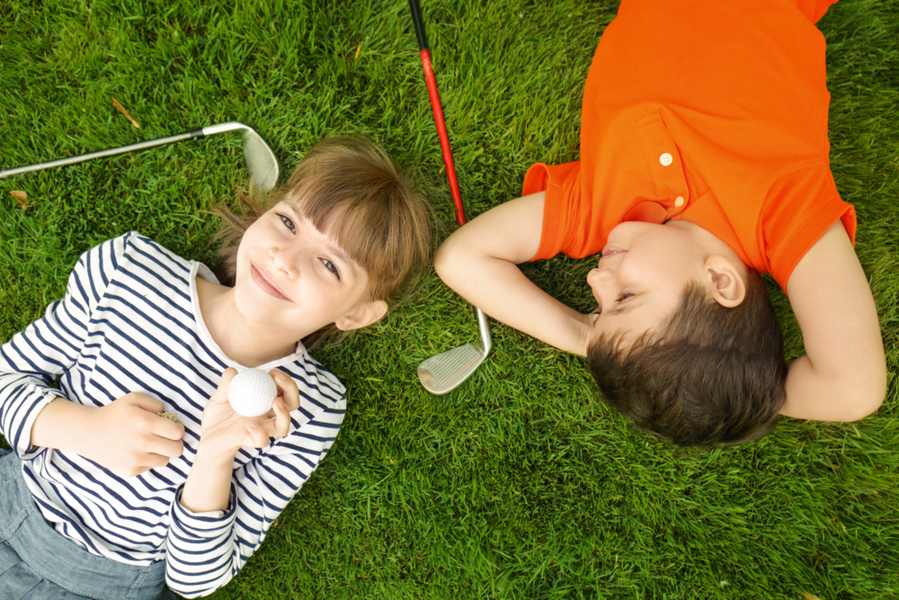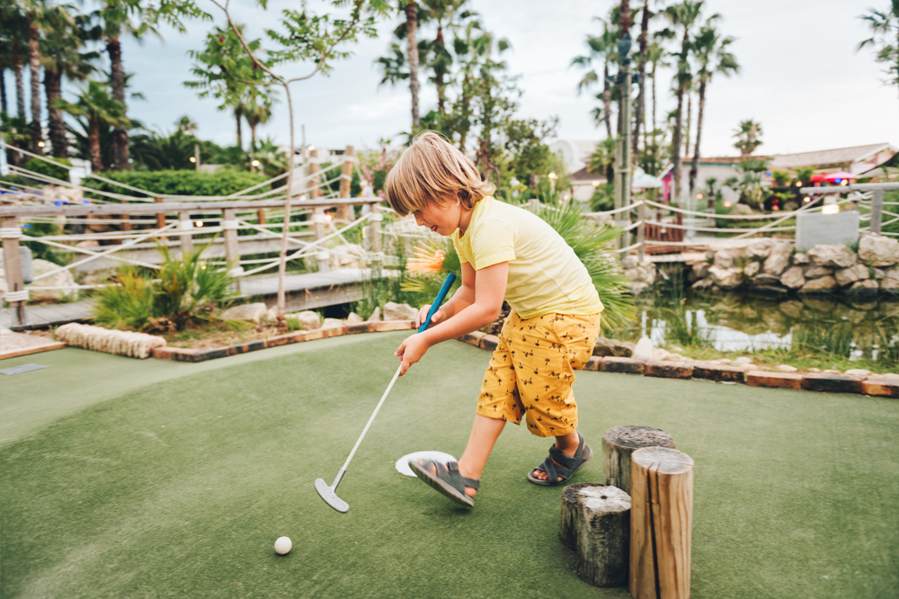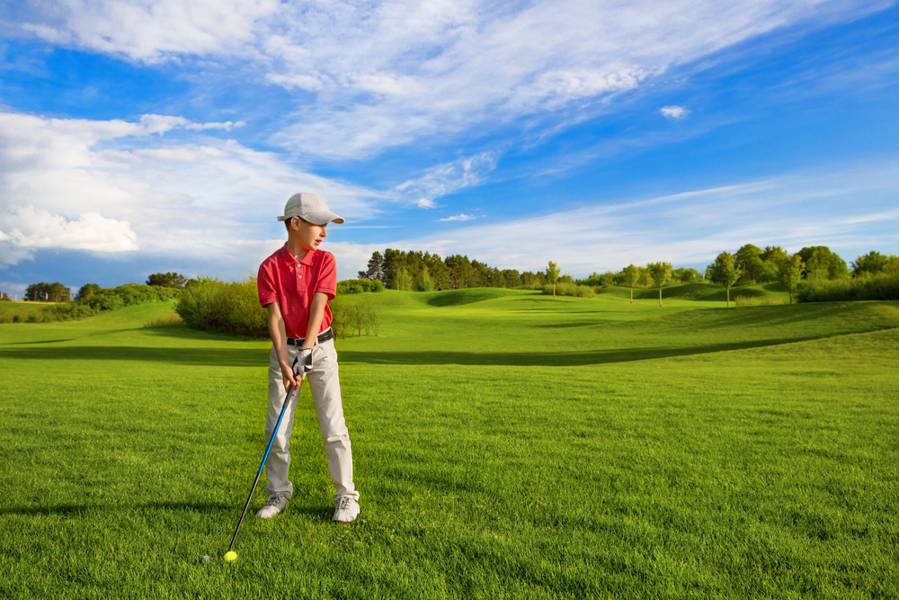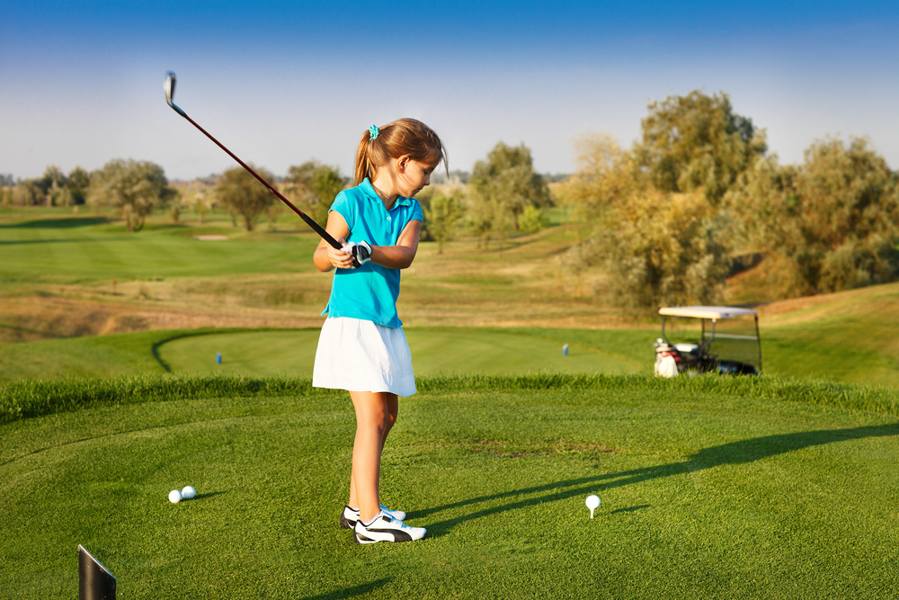Golfsupport's Complete Guide to Junior Golf
Did you know, golf is one of the fastest growing youth sports in the world? It is one of the only sports that you can play competitively for your whole life, no matter what your skill level or age. The sport will not only encourage you to spend more time in the great outdoors, but it also teaches you important life lessons too, such as etiquette, patience and the benefits of hard work. Therefore, it is unsurprising that more and more parents are encouraging their children to get into golf.
What’s more, with an increasing number of clubs offering junior membership and classes to teach youngsters how to play, the sport is becoming more and more inclusive too. In fact, in England and Wales, the Golf Foundation have introduced a national structured learning programme for children aged between 6 and 12 years old, known as the “Junior Golf Passport”. Under the guidance of a PGA professional, this scheme aims to help transform beginners into junior golfers ready for regular play, or membership at a golf club.
So, if you are considering introducing your young child into the wonderful world of golf, what are you waiting for? Navigate through this handy guide using the clickable contents below:
- When should I introduce my child to golf?
- Introducing your child to golf
- Investing in the right equipment
When should I introduce my child to golf?

The best age to introduce your child to golf is around the age of 3 years old. At this young age, children are far more willing to try new things and are considerably more adventurous, which allows you to have some fun with your child whilst teaching them the basics of the sport. If your child is older than 3 years old, don’t worry – you are never too old to get started!
However, the answer to this question is entirely dependent on whether you think your child is ready to start grasping the basics, or not. As a parent, you will know best.
Coming up in our guide to junior golf, we outline some ways to encourage your child to get into golf.
Despite the tender age of 3 years old being considered the best age to get started, some golf manufacturers design golf clubs for children as young as 18 months old. As a result, if you think your child is capable, you can absolutely begin introducing aspects of the sport earlier. Just bear in mind that you must be careful that you don’t overdo it, as young children can be prone to injury as they are still developing.
But no matter what your child’s age, when you begin introducing your child to golf, it is key to ensure you are keeping it fun and engaging. It is a known fact that children have short attention spans, so to prevent your child from losing interest, ensure you keep it entertaining. For this reason, it is advisable to keep training to short bursts, and consider getting other people involved, such as friends and family.
But most importantly, as an adult, try to disregard any personal feelings you may have towards the sport and remember to not take it too seriously – to your child, it’s just a game.
Introducing your child to golf

We all know the best way to learn is to be hands-on – less talking, more doing. So, whilst teaching your child the basics of golf, you must think of ways to make it interesting and game-like. So, let them go out and hit the ball and make mistakes – don’t worry about what they’re doing wrong, just help them get better at what they’re doing right. If you are consistently criticising them, it can take its toll on both of you as the fun will end up getting sucked out of the game.
American professional golfer, Scott Davenport, advises:
“Small kids will often do everything they’re not supposed to — hold their club cross-handed and move their feet in their stance — but let them. Their young bodies are adjusting for leverage and balance; they’ll eventually outgrow these corrections.”
It’s worth noting that until children reach their teens, most aren’t going to be committed to the game. If they’re not having fun and enjoying themselves, they won’t be interested in carrying on with the sport in later life. So, it is worth taking time to make it entertaining and an all-round positive experience, rather than focusing solely on technique and the rules.
Golf activities to play
If you’re looking to get your child into golf, it is a good idea to introduce them to the sport slowly – this doesn’t mean taking them straight to the golf course. This can be extremely intimidating for youngsters – and even discouraging when they see they aren’t hitting the golf ball as far or as high as other golfers on the course. Therefore, it is important to consider other child-friendly activities that help to get your child excited about the prospect of playing golf.
One popular – and effective – way of doing this is by taking your child to play crazy golf. Not only is this an engaging activity where they can enjoy themselves in a light-hearted environment and play a game, the experience will ultimately be encouraging for the child, as they are instantly rewarded for hitting their golf ball into different sections of each hole.
As a result, this introduction to golf at a basic level will help them to get excited about the idea of playing golf on an “big” course with the “professionals” when they are ready.

On the other hand, for very young children, you may want to consider introducing the sport by playing activities that incorporate aspects of the game. For instance, playing the following games that imitate the idea of getting the golf ball into the hole:
- Rolling a small tennis-sized ball into a Hula-Hoop
- Set up an obstacle course indoors or in the garden for your child to putt around
- Purchase their very own mini plastic golf set to play indoors, or in the garden
READ MORE: 5 Ways to Get Kids into Golf
If your child is a little older and wants to learn more about the intricacies of golfing techniques, you may want to think about teaching them using the “backward chaining” method. Essentially, instead of being taught a sequence from start to finish, backward chaining is the reverse – starting from the last step and working your way forward to the first. This is often adopted for young children because it’s easy to break down the sequence into steps that are easily digestible.
Investing in the right equipment
As junior golf is such a growing sport, you will find a large range of different golfing equipment on the market but knowing what to buy can be tricky. There are several variables you must consider to ensure you are purchasing the right golf equipment for your child (such as their height and weight of golf club), as well as how much you are willing to spend. Read on for our top tips for purchasing the right golf equipment for your child.
Golf clubs

It is unnecessary for a young golfer to carry fourteen clubs in their golf bag, which is why we advise against purchasing a package set for a junior beginner who has just been introduced to the sport. As a result, we recommend purchasing individual clubs, one at a time.
At first, it is sensible to purchase a junior putter, as this requires less exertion and there is less room for injury or error. Once your child is enjoying the sport and benefiting from your lessons, and progressing well, you can think about advancing onto other junior golf clubs for their golf bag. A good place to start is looking at higher lofted clubs, such as junior irons.
How to ensure you are purchasing the right clubs for your child?
One thing to bear in mind when purchasing junior clubs is how they are built and designed. Two of the most common issues young golfers have are:
- Buying clubs that are too heavy – this can hinder swing and cause injury.
- Buying clubs that are too long – the longer the club, the harder it is for junior golfers to swing and hit the ball. This will lead to a swing that is too flat.
Young players using ill-fitting clubs can result in bad swings and may even cause injury, thus significantly hindering the progress of your child. This is the last thing you need if you are encouraging your child to get into the sport – it is crucial to make it as easy for them as possible.
TOP TIP: Do not buy longer clubs in the hope that your child will grow into them.

Therefore, as a general rule, you should opt for the shortest and lightest club on the market, to ensure they have ultimate control over their club. This ensures a lot of loft and reward for the player, which will ultimately give them a buzz. At this stage in their golf journey, the sport is all about getting the ball up in the air and hitting it as much as possible, so they will like the game and keep working at it.
Graphite shafts are also advisable for most young players, as they create clubs that are much lighter than their steel counterparts, preventing the issue of the club being too heavy to swing capably – or causing an injury!
How do you know if you’ve bought the right clubs?
In order to find out whether a club is or isn’t correctly fitted for your child’s build, get them to pose in different swing positions to see how they hold their club. If your child cannot hold these positions, the club is too heavy and/or too long for them. This can cause major problems in their technique. This is why, here at Golfsupport, we advise all golfers to get fitted by a PGA professional.
Contact Golfsupport’s PGA professional fitter on 0844 324 6766, or talk to a member of staff in store today to book an appointment.
Golf bags

Golf bags are a key piece of golf equipment, as they provide storage for a selection of golf clubs and other golf accessories. They ensure your clubs are kept safe and damage-free, as well as keeping them organised using dividers. Therefore, it is imperative that you purchase a junior golf bag that appropriately fits your child, to make sure that it does its job correctly.
As a result, we recommend taking your child to a local golf shop and trying on different types of golf bag, in order to determine which one works best. Let your child choose their own bag and allow them to select their favourite colour and style. The idea is if they like the look of their bag, they will be more inclined practice with it.
TOP TIP: If your child is particularly small and often finds their clubs falling to the bottom of their bag (making them hard to access), you may want to add some old packaging foam into the bottom of to push them up.
Golf balls
To begin with, you may want to buy your child a basic golf ball whilst they figure out how to play a game of golf competently. However, it is worth noting that golf balls range from low to high (the compression) and come in different materials and layer options. As a general rule, a low compression ball is geared up for golfers with slower swing speeds, and a high compression ball is for golfers with a high swing speed.
Only once your child is keen to continue with golf, you may want to enquire about a custom ball fitting service to find the perfect ball for you.
READ MORE: Which golf ball is right for me?
Feel free to get in touch with us if you have any further questions regarding junior golf products.









